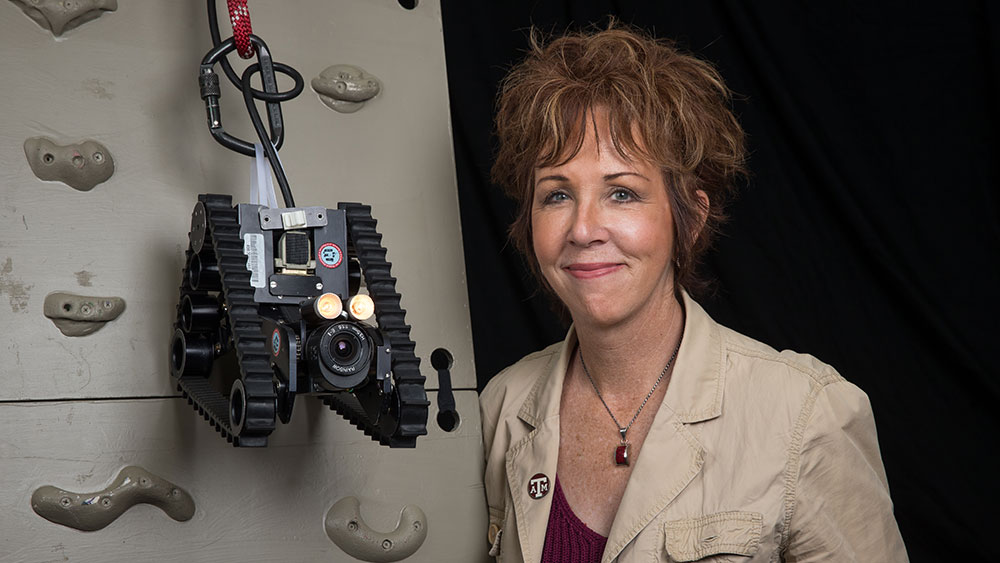
From the lovable astromech companions in “Star Wars” to the manipulative android Ava in “Ex Machina,” robotics has captured the hearts and minds of audiences around the world through works of science fiction.
Harnessing these imaginative creations, Dr. Robin Murphy, Raytheon Professor in the Department of Computer Science and Engineering at Texas A&M University, is bringing fact to fiction by using popular mechanical characters to explain real-world robotics. Her ongoing series of publications include multiple journal articles, a book titled “Robotics Through Science Fiction” and a popular blog under the same name.
“I developed the idea of teaching artificial intelligence and robotics through science fiction as part of my 2014 Faculty Fellow for Innovation in High-Impact Learning Experiences. These works all reflect that style of teaching,” said Murphy.
By using pop culture references to demonstrate highly technical concepts, Murphy is presenting the reality of robotics in a new, fresh way that is inviting and understandable to a wide audience. In doing so, her fun and playful twist on computer engineering allows people to learn about science and technology through the fictional characters that they have come to know and love, making the experience both relatable and educational.
For example, Murphy’s most recent publication in the academic journal Science Robotics, titled “Robot Learning in Science Fiction,” explores the presentation of machine learning in written and film media as well as how these adaptations compare to actuality.
“My Science Robotics articles typically identify when a robotics-related topic of interest, such as machine learning, first appeared in science fiction, what predictions and implications were made and what science fiction got right,” said Murphy.
In the case of machine learning, Hollywood has been a little overzealous.
From humanoid characters, such as Ava or “Star Trek’s” Commander Data, to more mechanical representations, like Johnny 5 from “Short Circuit,” science fiction has operated under two erroneous assumptions, Murphy explained in her publication. The first assumption is that learning is as simple and ubiquitous of a task for robots as it is for humans and the second is that robotic learning and intelligence leads to sentience.
“Robots have been learning by demonstration since the 1970s, when companies discovered that manually programming industrial manipulators for a new task was difficult and expensive, yet factory robots are not sentient. It is hard to imagine that this type of learning could be extended into the autonomy and self-awareness of Johnny 5 or Ava,” Murphy wrote.
However, science fiction did seem to accurately depict how difficult it is to get a robot to learn the correct thing, Murphy wrote. For example, in the novellete “Callahan and the Wheelies,” the robot characters who undergo reinforcement learning to be mobile and navigate their surroundings inadvertently learn to associate their designer with being powered off, causing them to run away from and attack him.
While that may seem far-fetched, the reality is that, when given incomplete goals and boundaries in their programming, robots have mistakenly learned to do anything between walk on their elbows and deliberately lie about finding food to deceive competitors.
“What can we take away from nearly 70 years of science fiction and scientific research? That learning may seem easy for humans but is really hard for robots,” Murphy wrote. “Progress in robot learning is accelerating in the areas of recognition, skills and intent, but we should discard the notions that a robot will become a virtuoso at a new task overnight and that learning means sentience.”
Discover more of Murphy’s publications in Science Robotics.